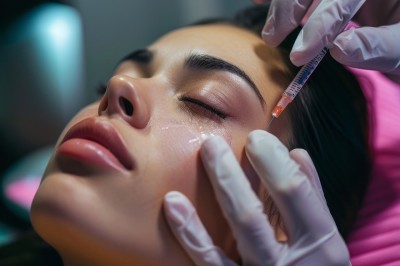Surgery for bat ears
Surgery for bat ears
What are bat ears?
Bat ears is the term given to a persons ears when they do not lie flat against the side of the head, and stick out instead. It is not a term of abuse, and is a perfectly acceptable medical term.
What are the reasons for having surgery for bat ears?
Surgery to correct bat ears (otoplasty) is performed only for cosmetic purposes. There is no medical condition that necessitates surgery for bat ears. That said, however, it cannot be stressed enough that the psychological well-being of a person may depend on how they feel about themselves, and someone with bat ears may be so distressed by their appearance that their health and well-being are affected.
We all know how children can tease each other mercilessly at school and at play, and this may make a child so miserable that life can be unbearable. It is often up to the parents to understand what is going on and suggest to their child that an operation to pin back the ears would solve the problem.
What happens during surgery for bat ears?
Two types of operation can be performed. Both types are usually performed under general anaesthetic, so you will be asleep, and both are normally carried out either by ear, nose and throat (ENT) surgeons or by plastic surgeons.
The second (newer) type of operation is more often performed by plastic surgeons. Although it sounds simpler, it is more difficult and is therefore only carried out by very experienced surgeons. The surgeon finds the extra strip of cartilage in the same way, but the skin is lifted off the surface of the cartilage (rather like removing a glove from a hand) and the surgeon scrapes away at the cartilage. This thins it down and makes it less springy, so the ear can be stitched back and remain in place as with the first type of operation.
In both cases, the surgeon may give you antibiotics during the operation to reduce the chance of infection. The actual benefits of this, however, are unclear.
What happens before surgery for bat ears?
There are no special preparations for this operation, apart from avoiding food and drink for at least six hours before the procedure.
What are the possible common complications?
The main complication is infection of the wound. If the ear becomes more painful, swollen and weepy, you should see your GP immediately. Wound infections are easily and successfully treated with antibiotics.
You may have some pain after the operation, which is usually relieved by simple over-the-counter painkillers such as paracetamol.
How long will I have to stay in hospital?
Patients are usually kept in hospital for one night. However, it is becoming increasingly common for the operation to be done early in the morning, so you (or your child) can be discharged home in the evening. Make sure you have someone to take you home, as you will probably be quite groggy from the anaesthetic.
What happens after surgery for bat ears?
You (or your child) will have to wear the tight bandage for about a week after the operation. The surgeon then removes the bandage and the skin stitches (unless self-absorbing ones were used), and you are (or your child is) given a less tight bandage to wear around the head for up to three months, depending on the type of operation that was carried out. This bandage can be taken on and off depending on your (or your childs) activities. The main point of it is to protect the ears from any trauma, so the bandage must always be worn in bed. This is especially important in children, whose ears must be protected from the usual rough and tumble in the playground at school. Swimming is not usually recommended for at least two weeks after the operation.
The results of the operation are usually good, and you should discuss it with your doctor if you think that you or your child would benefit from it.
Sajid Latif is writing in financial topics and have strong knowledge in all financial matters and points like money and finance, loans life insurance and health insurance etc. To get one best quote for health insurance please visit us.



























